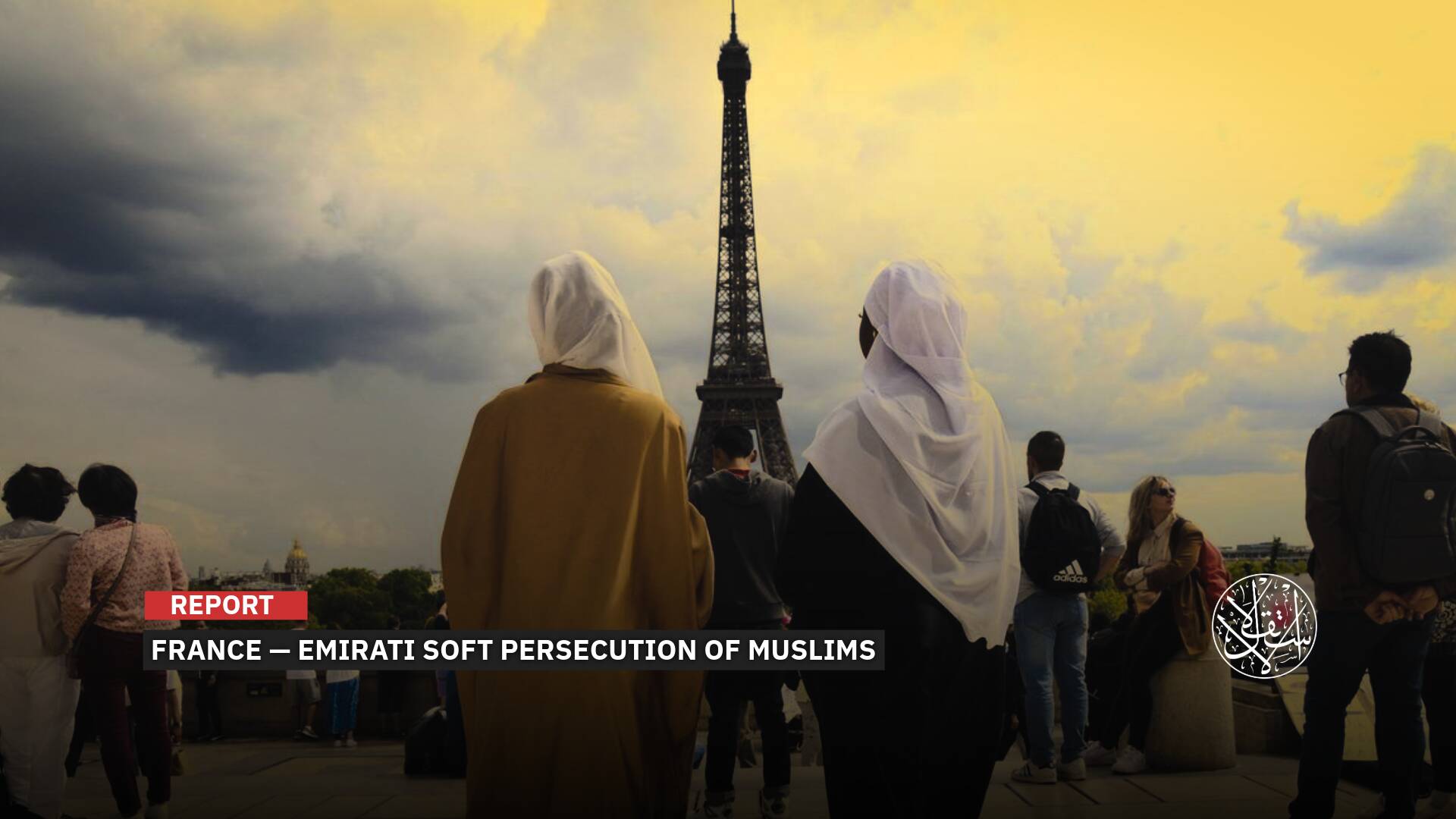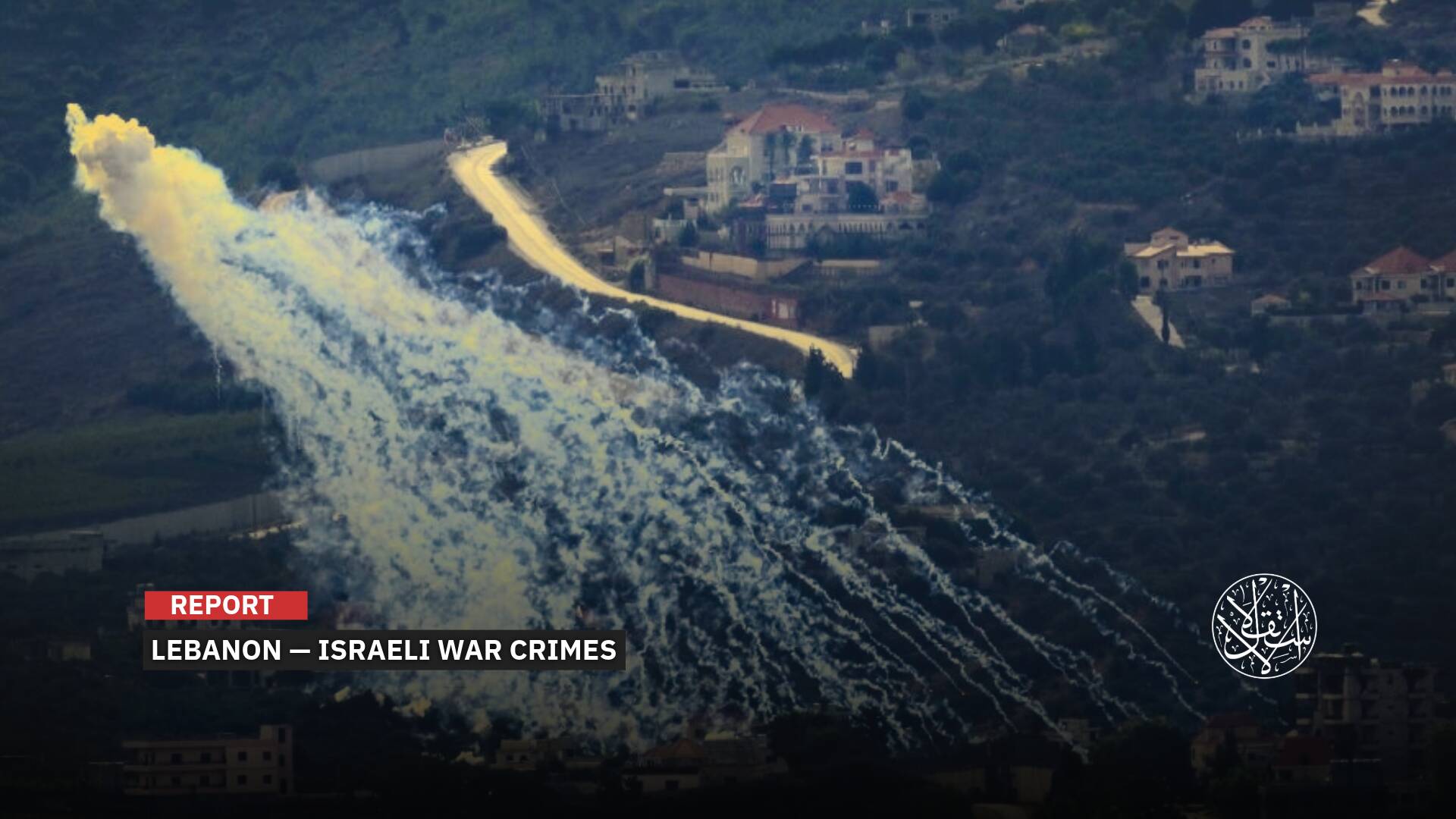Israeli Occupation Tourism in Syria’s Stolen Lands: How This Began and Where It’s Going

“Similar tours were organized along the Gaza border following the Israeli genocide on the Strip on October 7, 2023”
After the fall of Bashar al-Assad’s regime on December 8, 2024, the Israeli army didn’t stop at cross-border incursions into Syrian territory or breaching the buffer zone; it quickly moved to organize guided tours in the area.
For the first time since the founding of “the State of Israel” in 1948, Israeli tourists were taken on trips deep into southern Syrian lands. The initiative was led by the Israeli Army’s 210th Division in cooperation with various Israeli institutions.
An Unprecedented Move
Stationed along the northern front, the 210th Division is tasked with “border protection” and neutralizing threats against “Israel”, particularly those near the Golan Heights.
At the outset, hiking tours were offered twice daily during the Passover holiday, taking “Israeli visitors” through areas of the Syrian buffer zone now controlled by Israeli Occupation forces, as well as the occupied Syrian Golan Heights, seized in 1967.
Passover, one of Judaism’s key holidays, commemorates the Israelites’ escape from Pharaoh’s Egypt.
Israeli media reported on April 11, 2025, that the tickets sold out immediately, with tours scheduled to begin on April 13.

These tours would never have been possible if “Israel” hadn’t unilaterally scrapped the 1974 Disengagement Agreement signed with Hafez al-Assad after his son’s regime collapsed. Following the agreement’s cancellation, “Israel” launched an aggressive campaign of airstrikes and ground incursions aimed at dismantling Syria’s remaining military capabilities.
Israeli Occupation forces went on to seize Mount Hermon, known in Arabic as Jabal al-Sheikh, as well as villages and territories extending more than 25 kilometers inside Syria, adding to the long-occupied Golan Heights.
Mount Hermon, which straddles the Syria-Lebanon border and overlooks the Golan, is visible from Jordan and strategically positioned near Damascus.
Under the new plan, small groups of Israeli tourists are escorted by military convoys in armored buses, traveling up to 2.5 kilometers into Syrian territory. The tour route includes the Syrian side of Mount Hermon, with views of Damascus, and passes through Lebanon’s Shebaa Farms at the mountain’s base.
Visitors can hike, swim in the waters of the Ruqqad River, which flows into the Yarmouk near the Jordanian border, and explore parts of the abandoned Ottoman-era Hejaz Railway, which once linked Istanbul to Haifa, Nablus, and the Islamic holy sites in present-day Saudi Arabia, according to Israeli media.
The plan also includes a circular hiking trail descending from the southern Golan into the rugged Ruqqad Valley.
One striking feature of these tours is a stop at “Israel’s Misgav” observation point, where tourists can gaze across the border at the ruins of Lebanese villages destroyed by Israeli forces during ground operations in late 2024.
“It is important for us to recover our heritage in this area, promote tourism, and tell about the battles we have had during the war,” the Israeli army stated. Paratroopers will greet tourists and brief them on current operations along the Syrian front.
But on April 11, in an unexpected reversal, the Israeli Occupation military abruptly canceled all planned “tourist visits” to the Syrian border region, trips that had been officially authorized and guided for Israeli groups.

In a statement, the Israeli military said the decision to cancel the tours followed “an operational situation assessment,” adding that “entry to the fence-crossing routes will not be permitted at this stage”—a reference to routes near the occupied Syrian Golan.
According to Yedioth Ahronoth, three key routes were affected: the Ruqqad River in rural Quneitra, al-Hameh Bridge on the banks of the Yarmouk River west of the Golan, and the Hejaz Railway tunnel in the Yarmouk area.
One route, however, was spared. The path on Mount Hermon, overlooking the Lebanese border, will remain temporarily open, the military confirmed.
The tours had been organized by “Israel’s 210th Division” in coordination with the Golan Regional Council, the Keshet Yehonatan religious education center, the Golan Field School for environmental studies, and the Israel Nature and Parks Authority, Yedioth Ahronoth reported.
Interestingly, tourists were warned from the outset that they’d be participating at their own risk, and that trips could be canceled at a moment’s notice if security conditions changed.
Imperial Ambitions Disguised as Tourism
The Israeli army promoted the tours as part of a broader initiative titled “Returning to a Safer North,” framed as a response to the ongoing conflict with Hezbollah.
“It’s important for us to restore heritage and tourism to the region and to tell the story of the battles fought during the war,” the Israeli army said in its statement.
But Yedioth Ahronoth called the move unprecedented since “Israel’s founding,” noting that many of the sites included in the tours are located in closed “military zones.” The paper suggested the initiative had a provocative undertone, raising concerns that it masked expansionist goals under the guise of tourism.
Analysts argue that the Israeli Occupation’s illegal move reflects an attempt to normalize the idea among Israelis that these scenic territories are within their reach and under their control.

Yet beneath the surface, these tours appear to serve as a means of justifying the Israeli Occupation’s unlawful incursion into Syrian territory following the fall of Assad. On April 3, 2025, The United Nations Special Envoy for Syria, Geir Pedersen, condemned “the repeated and intensifying military escalations by Israel in Syria, including airstrikes that have reportedly resulted in civilian casualties.”
He warned that such actions “undermine efforts to build a new Syria at peace with itself and the region, and destabilize Syria at a sensitive time,” and urged Israel to cease the attacks which “could amount to serious violations of international law.”
Earlier, in February 2025, Israeli Prime Minister Benjamin Netanyahu had called for the complete demilitarization of southern Syria, home to the provinces of Daraa, Quneitra, and as-Suwayda, warning that his government would not tolerate the presence of new Syrian security forces near its borders.
In contrast, Syria’s president Ahmed al-Sharaa urged the international community, during the Arab emergency summit in Cairo in March 2025, to pressure “Israel” to immediately withdraw from southern Syria.”
Unsafe Zone
Observers say the Israeli Occupation’s plan to launch tourist trips into Syrian territory is a reckless move, even from a security standpoint, coming just days after a ground incursion sparked clashes with local residents in rural Daraa. On April 2, 2025, Israeli forces pushed into the Jubailiyah Dam forest area, between the city of Nawa and the town of Tasil, with dozens of military vehicles and armored units.
Local sources reported that residents of Nawa, Tasil, and nearby towns confronted the Israeli Occupation convoy and forced it to withdraw. According to al-Watan, 11 Syrian civilians were killed and others injured in the clashes. Tensions remain high amid repeated Israeli violations beyond the buffer zone and the continued failure of UNDOF peacekeepers to prevent these unprecedented incursions.

Observers note that Israeli officials’ attempts to establish an intelligence “zone of influence” extending 60 kilometers into southern Syria cannot be justified by Tel Aviv’s repeated claims of mistrust in the new Syrian administration led by Ahmed al-Sharaa.
Israeli breaches, including the so-called tourism initiatives, have provoked widespread anger among Syrians. Protesters have taken to the streets denouncing the Israeli violations and the killing of civilians, calling for resistance and an armed response against “Israel.”
This type of tourism is not new for “Israel.” Similar tours were organized along the Gaza border following the Israeli genocide on the Strip on October 7, 2023. For celebrities, politicians, and influential visitors to “Israel,” no trip is considered complete without a visit to the towns and villages near Gaza.
According to the Israel Central Bureau of Statistics, around 180,000 tourists visited “Israel” in the fourth quarter of 2023, a sharp decline from 930,000 during the same period in 2022, marking a drop of 81.5 percent.
Tourism accounts for roughly 3 percent of the Israeli Occupation’s economy and directly supports around 200,000 jobs.
Sources
- Israel’s Army Organizes Tourist Trips on Land Stolen from Syria
- Israel military cancels planned tourist tours within occupied Syria territories
- Israeli military organises tourist tours of newly occupied Syrian territory
- After IDF tours of Syrian, Lebanese border sell out, new secure tourism routes to open
- Passover's Hottest Tourist Attraction for Israelis: The Demilitarized Zone on the Syrian Border, Courtesy of the Army
- Israel plans 'control zone' and intelligence network in Syria: Report











